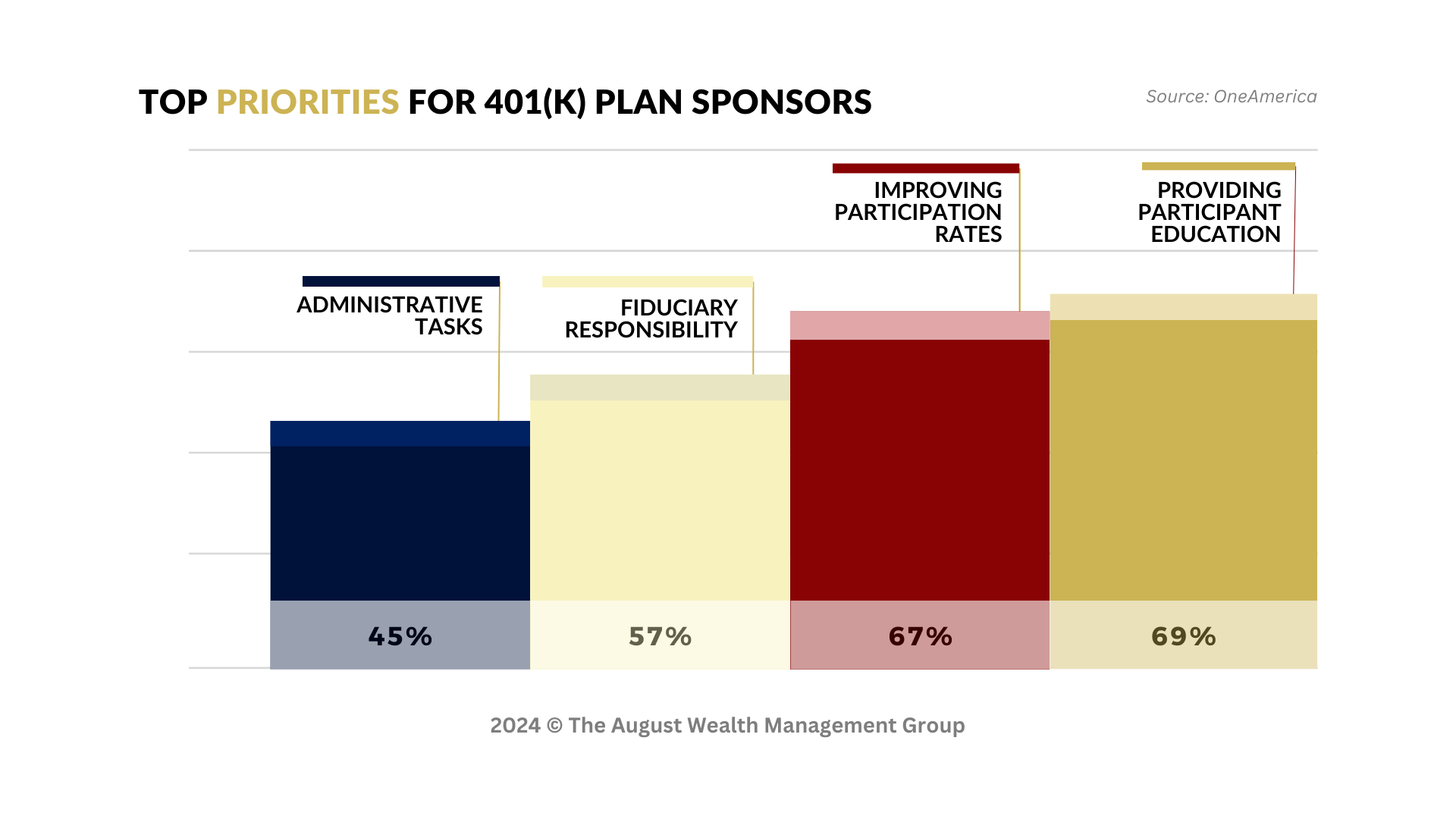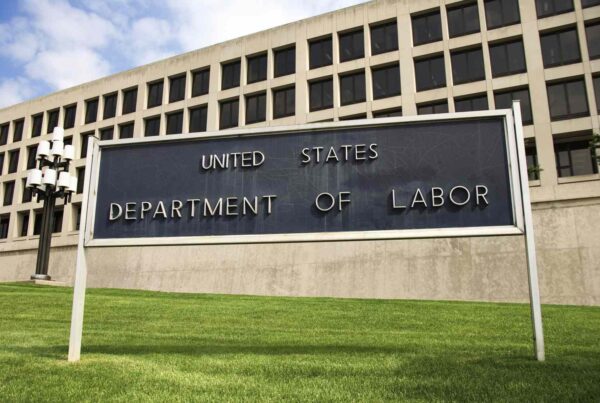Shedding Light on 401(k) Sponsor Priorities: Participant Education and Contribution Rates are Close

Key Takeaways
- Priority on Participation Education: Providing participation education emerges as the top priority for 69% of respondents, indicating a significant shift in focus.
- Improving Participation Rates: Increasing engagement emerges as a key objective, with 67% of sponsors aiming for improved participation.
- Fiduciary Concerns Dominant: Among the 401(k) plan sponsors surveyed, fiduciary responsibilities weigh heavily on the minds of 57%.
Survey Reveals: Priorities for 401(k) Sponsors
In a landscape where decisions impact financial futures, understanding the pulse of 401(k) sponsors becomes paramount. The article “Survey Reveals: Priorities for 401(k) Sponsors” delves into key insights drawn from a recent comprehensive survey conducted by OneAmerica, involving 1,019 plan sponsors over a span of three months. It sheds light on prevalent worries, strategic shifts, and pivotal priorities shaping the trajectory of 401(k) plan management.
Your New 401(k) Could be Fully Reimbursed See Your Secure Act 2.0 Savings Now
Surveying Priorities: Insights Unveiled
In a recent survey encompassing 1,019 plan sponsors over three months, fiduciary responsibilities emerged as the foremost concern for 57% of participants. Administrative tasks closely followed, with 45% expressing significant worry. However, a staggering 69% of respondents pinpointed “providing participation education” as their primary focus. This underscores a critical shift in priorities within the realm of 401(k) plan management.
Prioritizing Participation Education
With 67% of sponsors aiming to enhance participation rates, the imperative for comprehensive education becomes unmistakably clear. Email emerged as the preferred mode of delivery for 25% of respondents, while traditional methods such as posters, flyers, postcards, and meeting guides retained significance. These findings indicate a diverse approach is essential in engaging employees across various demographics and preferences.
Addressing Fiduciary Responsibilities
Despite the emphasis on participation education, fiduciary responsibilities remain a top priority for a significant portion of plan sponsors. With the fiduciary landscape continually evolving, ensuring compliance and mitigating risks is paramount. Proactive measures, such as regular reviews and robust documentation, are indispensable in safeguarding the interests of both sponsors and participants.
Tailoring Strategies for Diverse Sponsors
It’s noteworthy that over 80% of surveyed sponsors manage retirement plans under $9.9 million, indicating a predominantly small to medium-sized market. Within this context, customized strategies tailored to the unique needs and resources of each sponsor are imperative. Whether for-profit or nonprofit, sponsors must navigate distinct regulatory environments and organizational objectives.
Conclusion: A Unified Approach
In conclusion, as revealed by the Survey: Priorities for 401(k) Sponsors, while fiduciary responsibilities and administrative tasks hold significance, maximizing participation through robust education initiatives stands as the overarching priority. Leveraging diverse communication channels and tailored strategies empowers sponsors to enhance engagement and ensure financial security. As the landscape evolves, adopting a unified approach focused on participation education becomes indispensable for achieving successful outcomes for sponsors and participants alike. Explore our team’s expertise for guidance on setup and options. Click here for guidance on setup and options, exploring our team’s expertise.
Frequently asked questions (FAQs)
- What are the participation requirements and deadlines for New York’s Secure Choice Savings Program?
Private-sector companies in New York with at least 5 employees in NYC and 10 employees elsewhere must comply with the program, enrolling employees within nine months of its launch. Despite initially vague deadlines, a January 2022 meeting hinted at progress, with enrollment specifics anticipated soon. - What alternatives exist for businesses with existing retirement plans?
Businesses offering 401(k), 403(b), or pension plans are exempt from the Secure Choice mandate. They can explore alternatives like 401(k) plans, benefiting from our helpful resources. - How do the costs and contributions of the Secure Choice Savings Program impact employers and employees?
Employers encounter minimal administrative setup fees, rendering Secure Choice an affordable option. Additionally, the legislation includes a one-time $4 million investment, alleviating the need for employers to match employee contributions.







